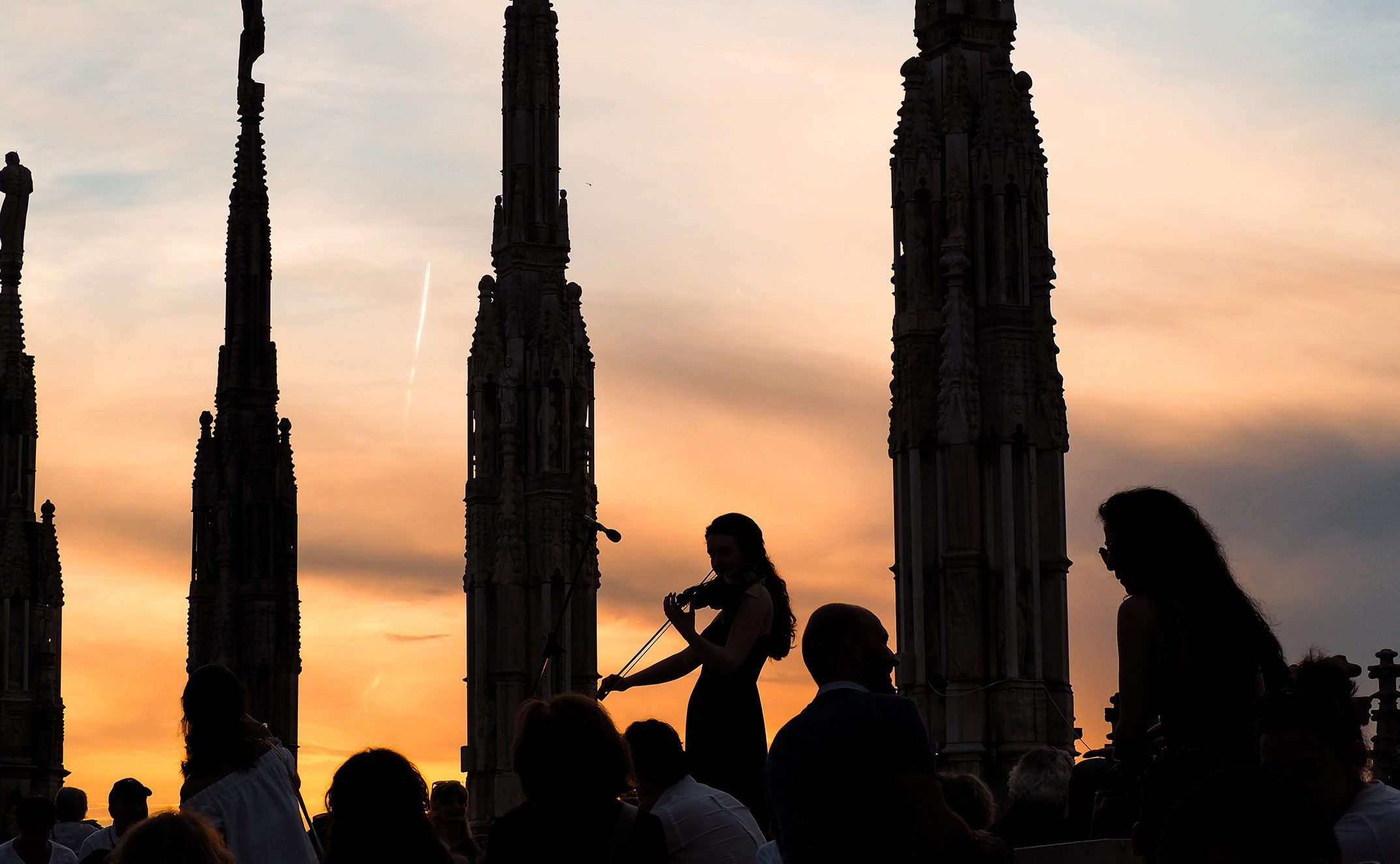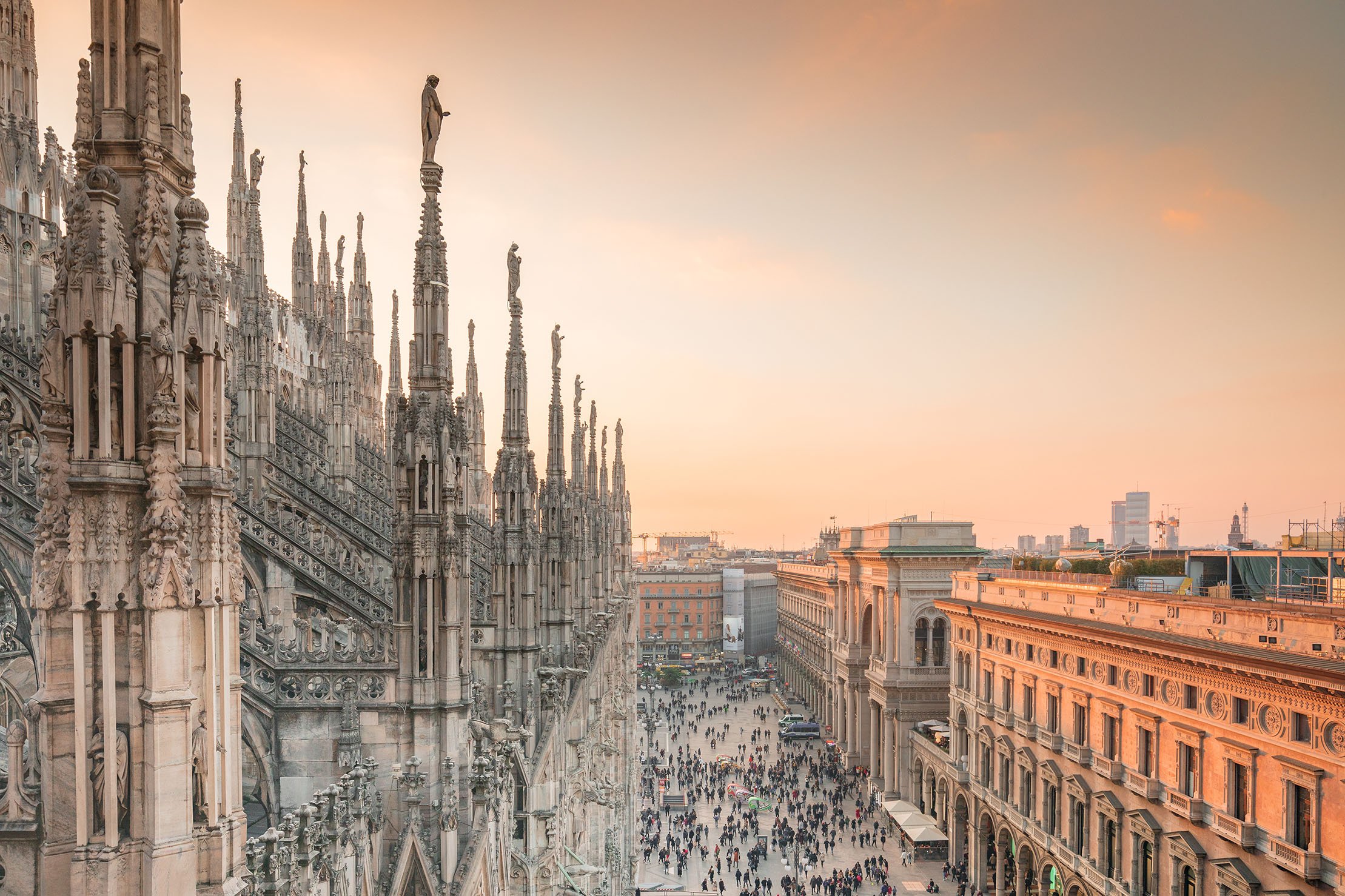The name Calogerus, of Greek origin, means “elderly beauty.” In the Greek ideal of beauty, that which is beautiful is also fair and good, suffice it to remember that in the Gospel according to John, the original Greek version calls Jesus the “beautiful Shepherd,” which later became the “good Shepherd.” This term was used in the East and in southern Italy for the hermit monks, who were thus called Caloyers or Calogeri, Therefore, some experts believe that this was not the name of the hermit saint but rather the appellation he was recognized with. However, other scholars are convinced that this was, in fact, his name. As there is a lack of reliable documentation, according to tradition, Calogerus was born around 466 at Chalcedon on the Bospherus, a city of ancient Thrace, which in 46 A.D. became a Roman province and then followed the fate of the Byzantine empire. Ever since childhood he fasted, prayed and studied the Holy Scriptures and, according to the Acts taken from the ancient Siculo-Gallican Breviary, used in Sicily from the 9th up to the 16th century, he went to Rome on pilgrimage, receiving from Pope Felix III (483-492), permission to live in solitude in an unspecified place. Here he had an angelic vision or a heavenly inspiration, telling him to evangelize Sicily. When he returned to the Pope, he received the authorization to go to the island, with his fellow monks Phillip, Onofrius and Archirion, to free the people form the demons and the adoration of the pagan gods. While Phillip went to Agira and Onofrius and Archirion set out for Paternò, Calogerus stopped along his journey at Lipari, in the Aeolian Islands, where he accepted the invitation of the inhabitants of the island to stay for a few years, preaching the Gospel and teaching them how to receive the benefits for their ailments, using the thermal waters and steam vents. Still today an important thermal water source and caves with beneficial steam bear his name. During his stay on the island of Lipari, he also had the vision of the death of King Theodoric († 526) who in his last years had begun persecuting those Latins whom he felt were a danger for his kingdom. Among his victims were the philosopher Boethius (480-524) his advisor, the Roman patrician head of the Senate, Symmachus († 524) and Pope John I († 526). This is described in the Dialogues of Pope Gregory I, known as Gregory the Great. The vision was fulfilled on the exact day and time of death of the King, and Calogerus saw his soul flung into the crater of nearby island of Vulcano. Following another vision, Calogerus left Lipari to then land in Sicily at Syac (now Sciacca), called Thaerme by the Romans for the thermal baths near which it rose. He converted the inhabitants and then decided to forever banish the “powers of hell” that reigned on the nearby Mount Kronius, dedicated to the Greek god Kronos, who for the Romans was the god Saturn. On the mountain of Giummariaro, another name that derived from the Arabs, who called it the mountain of the giummare, after the dwarf palms that grew on the side of it and which was later named Monte San Calogero, the name it still bears today along with Cronio, the hermit saint retired to the caves and caverns and ordered the demons to leave those places. The Acts say that the mountain shook with the roar of cries and then all quieted down in heavenly peace. Calogerus settled in a cavern near the many steam caves that exist here as in Lipari. In this cavern, there is a majolica image of St. Calogerus walled in the rock above a rustic altar that is said to have been built by he himself. The image dates back to 1545 and portrays the bearded hermit holding a book in his right hand and a branch staff in the left, a devotee kneeling at his feet and a fallen she-fawn wounded by an arrow. The image is inspired by an episode of his last days. As he was more than ninety years old, he was no longer able to nourish himself, hence God sent him a doe, who fed him with her delicate milk. One day, a hunter by the name of Siero, noticing the animal, took his bow and shot an arrow through the doe, which was able to drag herself inside the Calogerus’ cavern and die in his arms. The regretful and crying hunter recognized the old man as the person who had baptized him years earlier. He asked for forgiveness and Calogerus took him to the nearby steam cave, giving him instructions as to the curative properties of the steam and waters that flowed from that mountain. The hunter, who became his disciple, often climbed the mountain to visit him. But forty days after having killed the doe, he found the old hermit dead, still kneeling before the altar. According to tradition, he died in the cave between the 17th and 18th of June, 561 and had lived there for thirty-five years. Once the news had spread, the inhabitants of the nearby towns rushed there and buried him in the cave and later transferred him to another one, the memory of which has been lost with the centuries. In the 9th century, a monk by the name of Sergius, who came from Mount Kronius or Chronius, composed a series of Hymns in Greek in his honor, in which it was said that St. Calogerus did not land at Sciacca, as was believed, but at Lilybeo, now Marsala, without indication of where he died, nonetheless encouraging all to visit and honor the cave in which the saint had lived, crushing demons and often healing the sick. The contemporary scholar Francesco Terrizzi believes that St. Calogerus, having lost his fellow monks martyred by the Vandals, went first to Palermo, later passing through Salemi, Termini Imerese, Fragalà, Lipari, Lentini, Agrigento, Naro and finally settling in Sciacca. This would explain the many traditions and the different caves inhabited and attributed to one and the same saint. Also, the relics of the saint, according to yet another tradition, were later transferred to a monastery about 3 km from the cave. In 1490, they were transferred to Fragalà (Messina) by the Brazilian monk Urbano da Naso and then in the 19th century to Frazzanò (Messina), in the parish church. Some of his relics are also preserved in the shrine of St. Calogerus, which rose near the cave on the mountain of San Calogero at Sciacca in the 17th century and is a pilgrimage destination. In any case, St. Calogerus is highly venerated in all of Sicily and in all of the cities mentioned above he is honored with processions full of atmosphere and celebrations, typical of the intense religiousness of the Sicilians. Almost all are celebrated on his feast day, June 18th.
ST. CALOGERUS
atron Saint: Summer harvest, Farmers





 Tiburio
Tiburio

